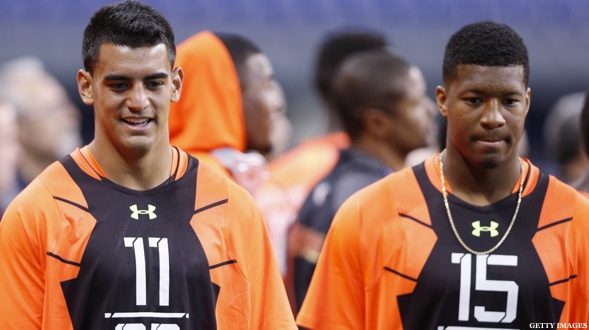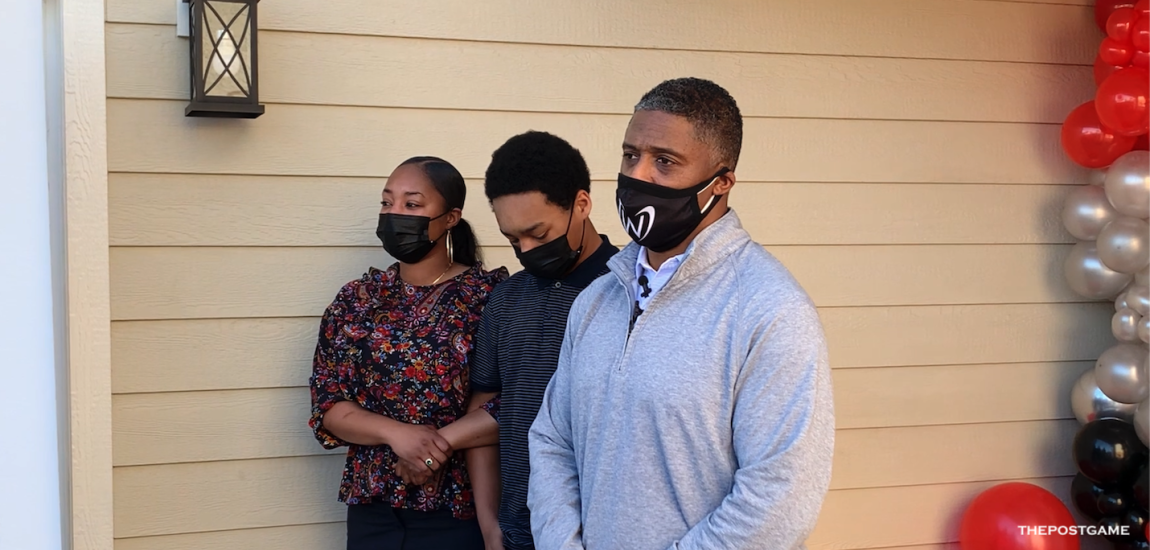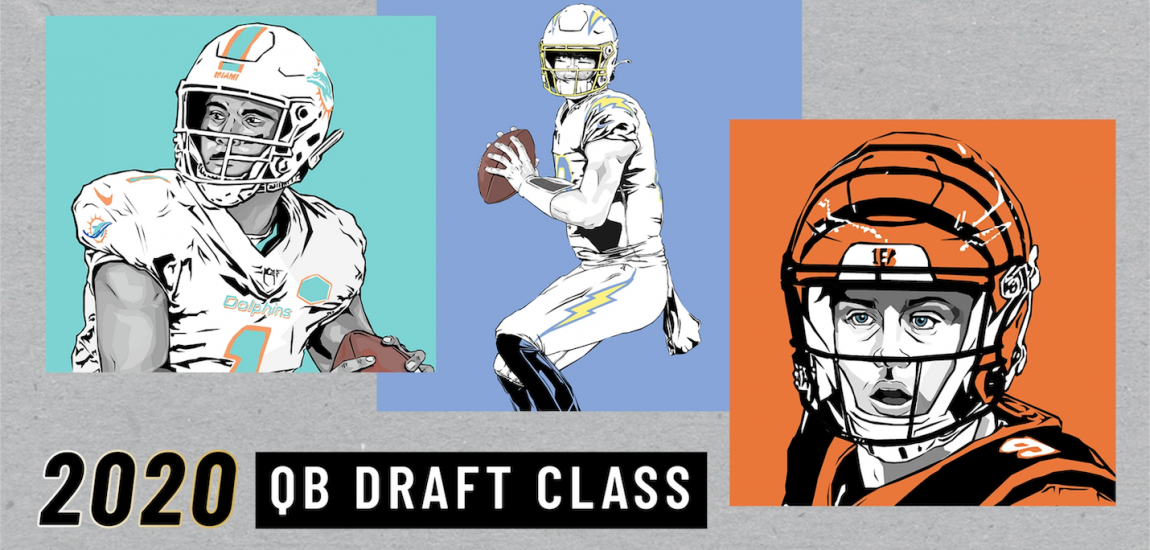If Jameis Winston and Marcus Mariota are absent for this month's NFL draft it will be a strange, and perhaps unheard of, event.
While there have been cases of top-10 picks skipping the festivities, it is exceedingly rare for two players projected to be selected this early to not be in attendance to shake hands with the commissioner.
If either Heisman-winning quarterback is selected No. 1 overall by the Tampa Bay Buccaneers on April 30, it will be the first time the top overall pick has been absent since Dan Wilkinson in 1994.
With Winston, who is the odds-on favorite to be selected first, there's a sense that his presence at the draft would serve as a distraction. The former Florida State star was the subject of a high profile sexual assault while in college and he was known for his off-the-field antics.
For what it's worth, Winston says he simply wants to celebrate with his family in Alabama.
Interestingly, commissioner Roger Goodell didn't seem too upset with the possibility of Winston's absence.
"I think that it’s something we respect when a player says, 'I’d like to be with my family on that day,'" Goodell told MMQB. "It's an important day for them also."
Mariota cited similar reasons for not making the trek to Chicago for the marquee event of the NFL's offseason.
Marcus Mariota told NFL it is important to him, personally and culturally, to be in Hawaii to celebrate next step in life. No draft for him.
— Adam Schefter (@AdamSchefter) March 31, 2015
While it would be unprecedented for two players of this caliber, both star quarterbacks expected to go in the top 10 picks, to skip the draft, they won't be the first high profile players to be absent in recent years.
In 2004 Philip Rivers chose to watch the draft from his couch at home. In the end that may have been a good move, as he didn't have to come on stage and accept a New York Giants jersey. That year's No. 1 overall pick, Eli Manning, was photographed awkwardly smiling while holding a San Diego Chargers jersey.
#TBT Draft Day Edition: Eli Manning and his family awkwardly smile while awaiting a trade from San Diego... pic.twitter.com/ZHH7pCTU0O
— Tyler Donohue (@TDsTake) May 8, 2014
Manning and Rivers were on the Chargers and Giants, respectively, for only a matter of minutes before being traded for each other.
The scene from Rivers' house was one of surprise, and he's said he was shocked when the Giants picked him.
"I never spoke to any member of the Giants’ organization on draft day," Rivers said. "When I heard my name called, that was the first of any contact I had. I had no contact with anybody, usually they call you beforehand, so I knew something was up there, when you get drafted without even hearing from the team."
A few years later, in 2007, former Wisconsin Badgers left tackle Joe Thomas elected to go fishing rather than hear his named called third in the draft.
"I didn't want to involve myself in all the craziness that goes on (with the draft)," Thomas told reporters. "I knew it was going to be an exciting enough time where I didn't need to go to New York."
Rivers and Thomas have produced stellar careers, with Thomas going to eight Pro Bowls and Rivers making five. Wilkinson, meanwhile, was a solid if not spectacular player. He never made a Pro Bowl team but started 182 games during the course of 13 seasons.
The absences of Winston and Mariota will make it hard for this year's draft to match the incredible TV ratings of the 2014 event. That one tallied 32 million viewers, which was the most ever for the first round.





















